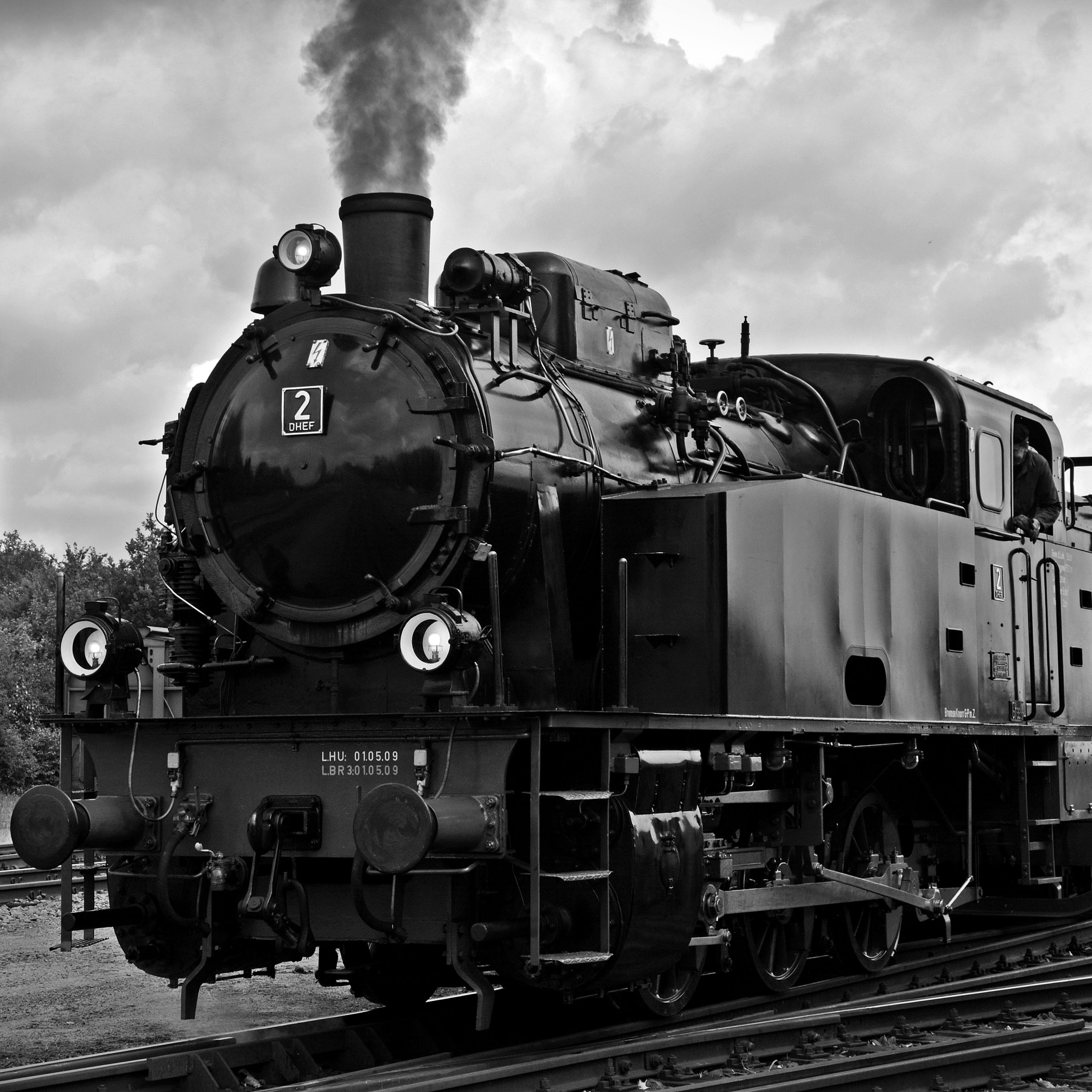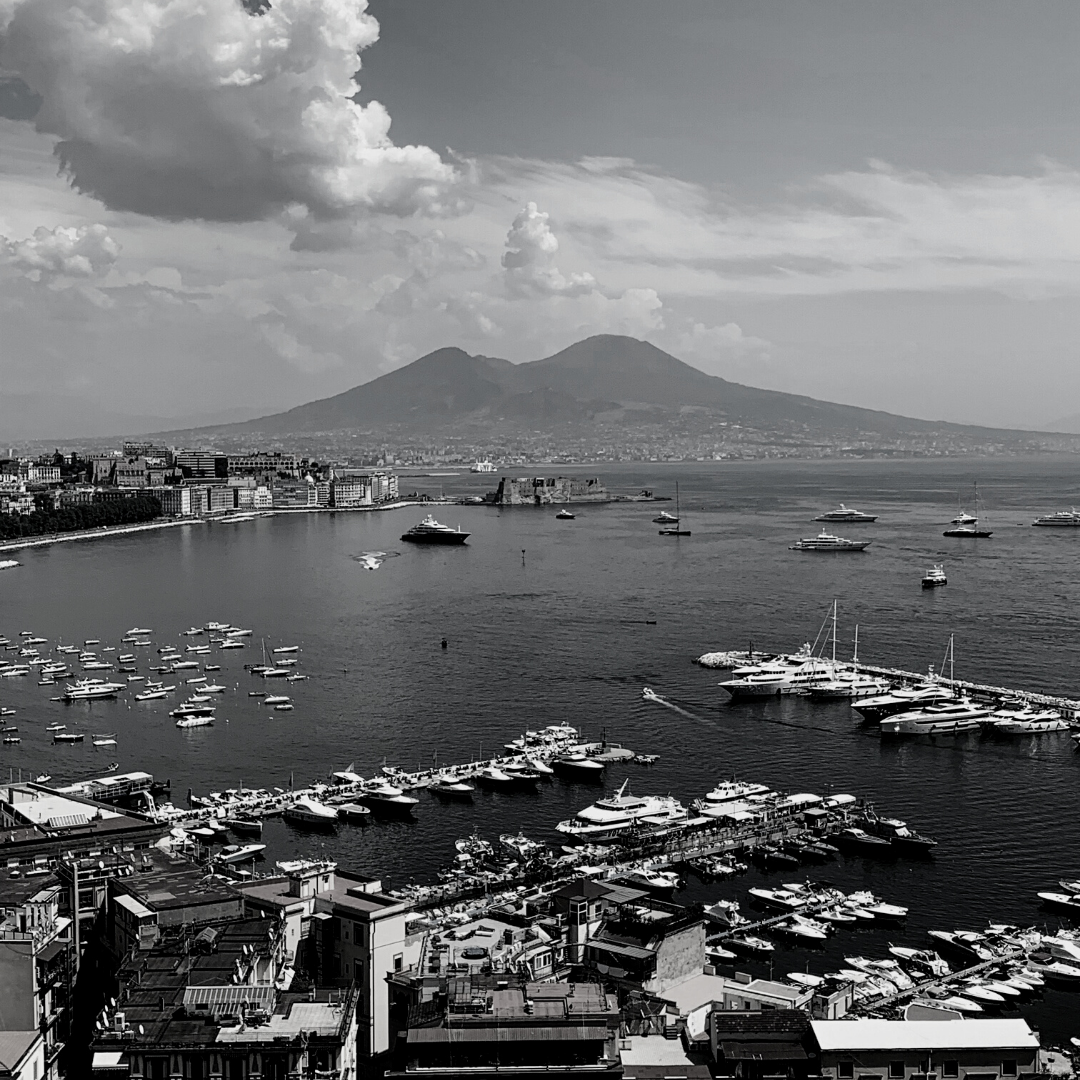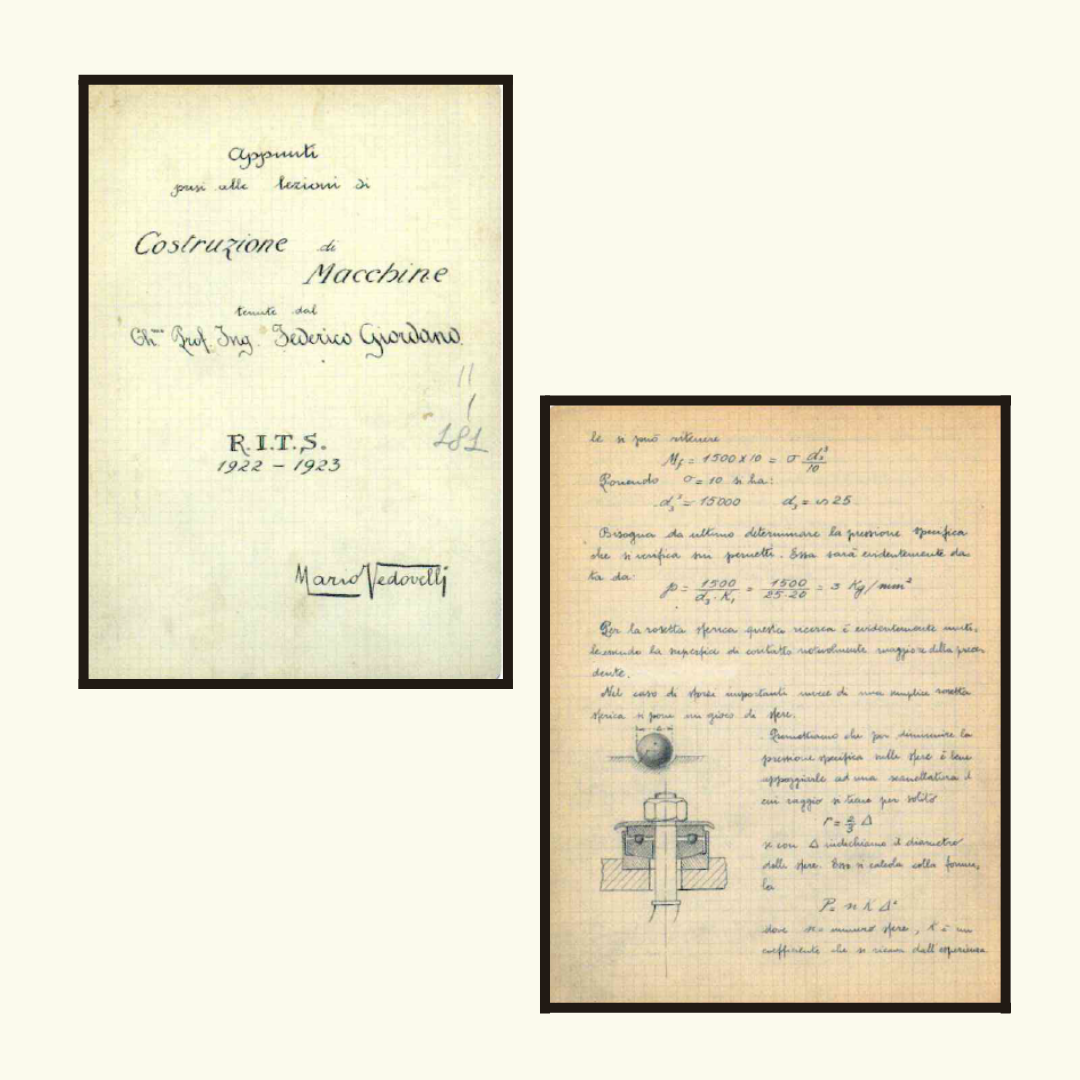Mechanical Engineering in time
-
Palaeolithic

The engineer, namely mechanical, exists since the beginning of time. In fact, Neanderthals killing an animal with a wood stick is already a "mechanical engineer". The very moment the man chooses his "weapon", he makes a series of actions: design to the purpose; seizing; optimising; finding the solution to reach the goal; integrated design; time to market.
-
331 B.C.

Ptolemy II Philadelphus (308 b.C. – 246 b.C.) founds the Mouseion in Alexandria of Egypt. This is the first example of technical education formally accepted in the ancient world. Hero of Alexandria is also considered an engineer. He studied at the Mouseion and he created the aeolipile, a scientific instrument that consists of a spherical or cylindrical vessel with oppositely bent or curved nozzles projecting outwards. a lighted fire beneath the sphere transforms water into steam. The steam passing through the tubes turns back into water and, the energy spread by the reaction activates the rotation of the sphere itself. The aeolipile is the predecessor of the modern steam turbine.
-
287 b.C.

In Syracuse, Archimedes was born. Known for its famous expression "Eureka!", Archimedes is the father of modern science. Among his discoveries is the law of the lever, which entitles him to a mechanical engineer. His studies turned out to be essential to build levers allowing humans to move weights by using little strength.
-
1400 a.C. - Renaissance

For centuries technicians and scientists worked alongside but never together: the first focusing on technical problems to find successful solutions, while scientists kept exploring theories far from the real world. Only during the Renaissance science and technique meet halfway. The technique - on the way to be known as technology - starts considering scientific results, while science starts progressing through the use of technical instruments. Future discoveries will be so important that we can still see the benefits today.
-
15/04/1452

Leonardo da Vinci was born: sculptor, painter, tactician, engineer, and so much more. In Milan, today is still possible the traces of this incredible man, who lived there from 1482 to 1498. During his time in the Milanese dukedom, under the protection of Ludovico il Moro, he tries his hands with the design of highly-innovative mechanical machinery.
-
1563 a.C.

In Milan was founded the Collegio degli Ingegneri di Milano, the first institution allowed to award practice licenses for engineers and architects.
-
1550 – 1617 a.C.

The Scottish mathematician John Napier (in Latin Nepro) introduces the logarithms at the basis of the slide rule (in the picture an instrument dating back to the 1920s). This instrument has been fundamental for engineers until the 70s of the XX century.
-
1644 a.C.

By the mid-XV century, the Scuole Palatine were founded in Milan. Reformed in 1733, the structure of the institution started to look like modern universities. Mechanics and Hydraulics were among the first taught disciplines.
-
1746 – 1818 a.C.

The French mathematician Gaspard Monge lays the foundation of descriptive geometry and, consequently, of orthographic projections, which are the main communication tools among technicians. In the picture: the representation of a machine to struck coins frontally and laterally through the use of orthographic projections. This is one of its first mechanical applications of the end of the XVIII century.
-
1760 a.C.

The looming industrial revolution arises the need for a high number of broadly skilled technicians. For this reason, at this moment in time, scientific-technical education starts playing a major role as one of the forms of the upcoming progress. Especially in Europe, both intellectuals and entrepreneurs start paying it the much-needed attention.
-
1790 - 1840 a.C.

In 1794, the Conservatoire National des Arts et Metiers was founded, a museum where practical demonstrations were held of how to use the machines and, starting 1819, also courses for technicians and workers were organised. Later, starting the first years of the 1800s, the first Polytechnic schools and Engineering Universities were born across Europe. The first Italian Engineering university was founded in Naples in 1811. Soon will be founded also the Polytechnic School of Berlin (1821), the Polytechnic School of Karlsruhe (1825), the Polytechnic School of Munich, the Polytechnic School of Stuttgart, and the École National des Arts et Manifactures in Paris (1829). Lastly, the Polytechnic School of Hannover (1831). Also in Milan, the Società di Incoraggiamento Arti e Mestieri di Milano was founded in 1838.
-
1842 a.C.

A tragic accident occurs on the train line Versailles-Paris, due to the fatigue fracture of an ax. Even though the basis of stress resistance and structural analysis were laid by Hooke (1635 – 1703) and De Saint Venant (1797 – 1886) through their nonlinear theory of elasticity, scientists begin to study fatigue resistance only after that dreadful accident.
-
29/11/1863

Professor Francesco Brioschi - also politician, mathematician, and already rector of the University of Pavia - founds Politecnico di Milano, inspired by the models of German-Swiss Polytechnic Schools. Its first campus was in via Senato, precisely hosted by Collegio Elvetico. The institution issued both building engineering and mechanical engineering diplomas. Picture: the first campus of Politecnico painted in the 20s by Eng. Maganzini.
-
1865 d.C.

One of the first complete lists of courses specifically for future mechanical engineers. Year 1: Rational mechanics, Geognosy and applied mineralogy; Technical drawing; Applied descriptive geometry; Chemical manipulation; Technical-practical math exercises; Topography. Year 2: Construction design; Technological physics; Practical topography exercises; Construction science: civil and public buildings; Industrial mechanics and water flow; theoretical-practical math exercises; Machine design. Year 3: River hydraulics; Industrial mechanics and machine construction; Machine design; Practical math exercises.
-
Inizio XX secolo

The ever-evolving industrial world asks for the development of engineering education and training. All schools, including Politecnico di Milano - which begins to play an always more important role in the educational field - start increasing and diversifying their programmes. The importance of mechanical engineering raises more and more to become one of the most relevant in the field. Picture: two examples of coursework of the Machine contruction course.
-
1911 a.C.

Mario Donig's dissertation is published. He will become a Professor at Politecnico di Milano. Source: Archivio Telesma.
-
1922 a.C.

That year, Prof. Federigo Giordano teaches the machine design course. Picture: course notes taken by the student Mario Vedovelli enrolled in the programme during the academic year 1922-23. Source: Archivio Telesma.
-
1960 a.C.

After the liberalisation of education, teaching is reformed: structures are broadened, the faculty increased, and new teaching methods adopted. From this moment on, Politecnico tightens its collaboration with the industrial world. technicians are more and more involved in delivering educational activities. The number of seminars and exercise courses increases exponentially, while students can serve internships in companies to develop their dissertation projects.
-
1981 a.C.

The Department of Mechanical Engineering is founded along with its first Research Lines: Machine Construction and Material Resistance; Industrial Ergotechincs; Mechanics and Drives; Vibration and Dynamics; Measurements; Machine Design; Ground Vehicles.
-
1988 a.C.

The Mechanical Engineering Programme enriches itself with more specialisation tracks: General Construction; Technological Construction; Transportation Contraction; Technology; Metallic Materials; Industrial Plants; Energy; Bioengineering; Instrumental-Electonic.
-
XXI secolo

By the beginning of the new millennium, the division between the Undergraduate and Postgraduate Programmes is introduced (a three-year Bachelor of Science and a two-year Master of Science). Over the years also fist-level Masters and second-level Masters are included in the offer, along with the Ph.D. Programme and Lifelong Learning Programmes. The research discoveries result in a continuous update of the course contents, which provides future engineering with a background highly-appreciated by the labour market.
